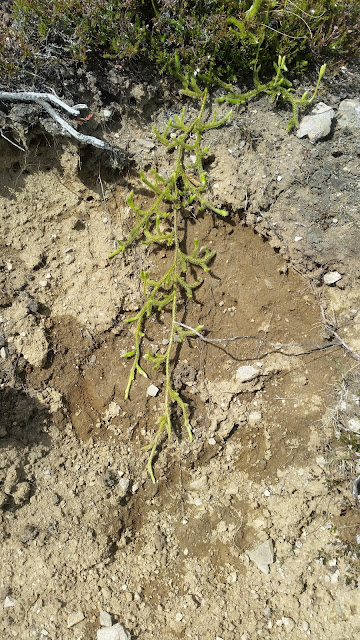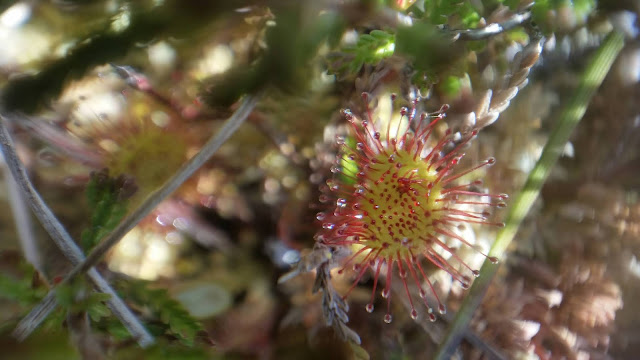I benefit from having botanical spies around the area... Geoff who runs Balsporran Cottages B&B just by the A9, south of Dalwhinnie, got in touch to say one of his guests had spotted Lesser Twayblade on one of the tracks below Geal Charn. It was a nice day, so we packed a picnic and set off to see what we could find. There is a public car park just off the A9 (which is worth a visit on its own account as it is the site of lots of orchids, including an hybrid one.) Here is a photo from 2 years ago as the orchids were not out when I went last week.
To get to the walking tracks, you have to walk through the grounds of Balsporran Cottage and across the railway. On the right of the track are some tumbledown cottages which have a selection of lichens, most of which I couldn't name but there were two kinds of Umbilicaria, which like upland areas.
 |
| Umbilicaria polyphylla in the centre and the yellow patches of map lichen (Rhizocarpon geographicum) |
 |
| Umbilicaria cylindrica with the frilly edges |
Walking along the track through mainly Heather and Cowberry, I found just one patch of Lesser Twayblade (
Neottia cordata) with 5 flowering spikes.
 |
| Lesser Twayblade |
These are orchids but not at all like their flashy relatives. Dull in colour and only about 10cm high, they grow nestled in the heather. My hand in the photo gives you a better idea of the scale.
A close up photo of the flower shows why it is called twayblade:
Another nice find was some Stags-horn Clubmoss (
Lycopodium clavatum) with its two fingered fruiting bodies. To read more about Clubmosses see
this post.
























